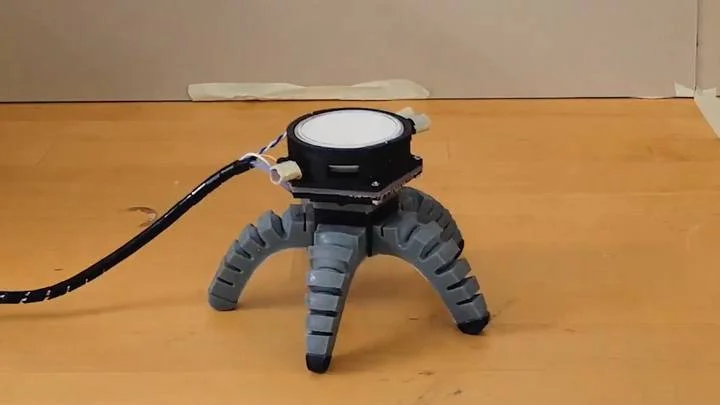Researchers at Cornell University have discovered a new way of controlling “biohybrid” robots using the natural electrical signals of mycelium, the vegetative structure of fungi. This method allows the robots to react more effectively to the environment compared to purely synthetic robots.
The research was published in the journal Science Robotics and its lead author was Anand Mishra, an associate researcher at the Organic Robotics Lab, led by Rob Shepherd, professor of mechanical and aerospace engineering at Cornell Engineering. Shepherd highlighted the importance of the study, saying: “This paper is the first of many that will use the fungal kingdom to provide environmental sensors and command signals for robots, thus improving their levels of autonomy.”
He explained that by growing mycelium on the robots’ electronic components, it was possible to create biohybrid machines capable of sensing and responding to the environment. Shepherd added: “In this case, we used light as an input, but in the future it will be chemistry. The potential of future robots could be to detect soil chemistry in crops and decide when to add more fertilizer, for example, thus mitigating the negative effects of agriculture.”
Incorporating biological material into robots is nothing new, but these systems are often complex and difficult to maintain. Mycelium, on the other hand, has notable advantages, such as the ability to grow in adverse conditions and respond to a variety of stimuli. Mishra commented: “If we think of a synthetic system, like any passive sensor, we only use it for one purpose. But living systems respond to touch, light, heat and even unknown signals.” He emphasized that this characteristic is fundamental for the development of robots that can operate in unpredictable environments: “We can take advantage of these living systems and, to any unknown stimulus, the robot will respond.”

The creation of these biohybrid robots requires interdisciplinary collaboration that goes beyond technical knowledge in engineering and electronics. Mishra highlighted the need for expertise in mycology, neurobiology and signal processing: “All these fields come together to build this kind of system.” During development, Mishra collaborated with Bruce Johnson, an expert in neurobiology and behavior, to understand how to record electrical signals transmitted in the mycelium. Kathie Hodge, an expert in plant pathology and the biology of plant microbes, taught Mishra how to grow mycelium cultures without contamination, a significant challenge when inserting electrodes into fungi.
The system developed involves an electrical interface that blocks vibrations and electromagnetic interference, recording the electrophysiological activity of the mycelium in real time. This activity is processed and converted into digital control signals for the robot actuators. The team built two biohybrid robots: a soft spider robot and a wheeled robot. In experiments, these robots responded to stimuli from the mycelium, such as walking and rolling in response to signal peaks and changing gear when stimulated by ultraviolet light. In another test, the researchers were able to completely suppress the mycelium’s native signal.
- See also: Machine Learning for Cell Analysis
The applications of this research go beyond robotics, potentially creating new ways of interacting with and understanding living systems. Mishra concluded: “This kind of project is not just about controlling a robot. It’s also about creating a real connection with the living system. Because when you hear the signal, you also understand what’s going on. Maybe that signal is coming from some kind of stress. So you’re seeing the physical response, because these signals can’t be visualized, but the robot is making a visualization.”


